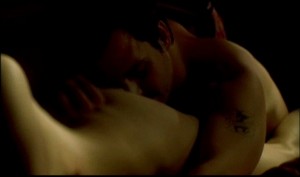In The Cut – Campion’s under-rated exploration of sexuality
![]()
In The Cut – Jane Campion
Reviews of Jane Campion’s In The Cut have been shamefully grudging. Always an interesting Director, her intriguing, challenging film has been dreadfully served by Distributors. This is surprising for a bad reason as it is, briefly, perhaps the most sexually explicit movie so far in main line cinema – but for a legitimate artistic purpose. In The Cut is a more than adequate thriller in its own right, even if the final plot twist is not hard to guess. However, this often disturbing, unsettling, multi-layered film is worthy of far more serious attention than its limited distribution will attract.
Well-served by her cast, especially a revelatory, powerful, intelligent performance by Meg Ryan, Campion is exploring difficult and challenging territory. Deeply perceptive about what it is to be a woman in our essentially masculine aesthetic and social culture, there is little to comfort men in this film. Campion is exploring the unsettling but fascinating relationship between sexuality, love and romance. In contrast to the clichéd treatment of these concepts in popular, especially Hollywood, movies, Campion develops with a courageous aesthetic vision, the isolation, even alienation of ambivalent feelings of female desire and passion. No wonder Michael Parkinson disliked it so much that he was strikingly aggressive in interviewing Meg Ryan about it. Ryan’s hitherto quintessentially romantic screen persona is demolished in the film. Forget the nudity and explicitness, this is as truthful, thoughtful, thought provoking performance, as you’ll see for some time.
This is a film about the deepest needs of human beings who happen to be male and female, rather than a lazy, comfortable assumption of the interaction between the usual simplistic gender stereotypes. It is hard on men, but perhaps no worse than we deserve, based on the empirical facts of social behaviour: men commit most murders and almost almost all sexual and violent abuse of children and women.
Technically the film is first class, beautifully shot and edited with an impressive constancy of tone. Claustrophobic, dark and atmospheric, it serves the seriousness of its aspiration well. There is, intentionally I think, a persistent, nagging ambivalence running through the film about the relationship between sex and physical domination which at its extreme leads to the horrific violence of the thriller story line. Meg Ryan’s character walks a familiar tightrope between revulsion at the ugliness of mens’ attitudes, language and behaviour towards women and an excited, visceral, physical attraction to precisely the same qualities. Sort of – man as a necessary sexual evil – or as the song has it: “Good Girls Always Love Bad Men”. There is nothing here to encourage the facile assumption that women like to be hit or hurt, but there is an honesty in Ryan’s character, perfectly matched by her performance, who is both repulsed by a traditional sense of the uncompromising, aggressive, masculinity of men – and yet drawn irresistibly towards it.
It is the honesty and truthfulness of the portrayal of this perplexing feminine paradox, that makes the film so impressive. One might complain that it reveals an unduly dark view of the possibilities of love between men and women. It may be that men are hopelessly and dangerously romantic, (far more than women by the way), and unrealistic in their expectations of women. But some men we might argue, are capable of seeing sex as an expresssion of love rather than the other way round.
This is a powerful, challenging film, worthy not only of more critical respect than it has been accorded, but more importantly a more courageous commitment by a Distributor to expose it to the wider audience it deserves.
(December 2003)
Filed under: 4 stars, Detective, Drama, General, Hollywood, Jane Campion, Philosophical, Romance


